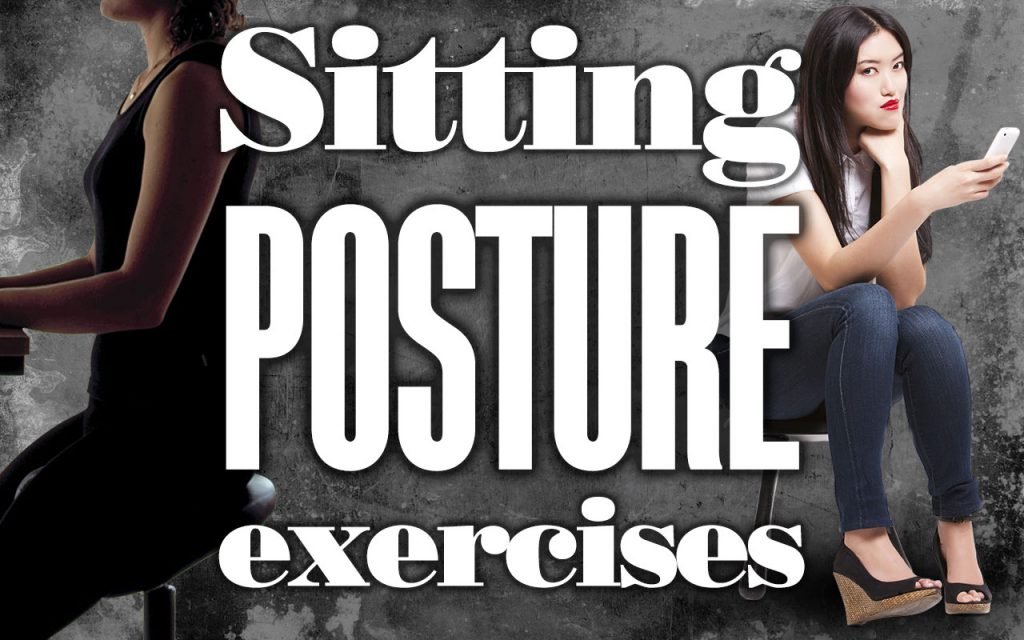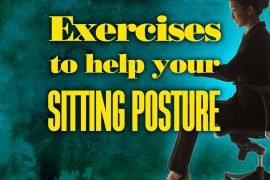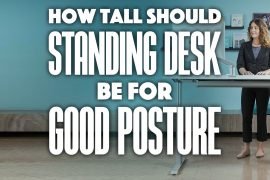[Updated on 1 January 2023] Do you experience neck, back, and shoulder pain after a day in the office? Well, this is not out of the norm for most people in the U.S, and it can easily happen if you spend an awful amount of time sitting down. Experiencing these aches and pains can make you very uncomfortable and less productive, and we all understand the more active you are in a day, the better for your health. Therefore, between having to put it all the hours at work, commuting, and responding to emails, it’s almost impossible to get a minute to catch your breath, leave alone getting more than 10,000 steps a day.
So, what measures can you take when you are forced to spend more than half your day working at your desk at work, and don’t have a standing desk, or can’t move as much as you would want to? Fortunately for you, your health doesn’t need to take a hit just because you have a desk job – And it doesn’t come with a gym membership either.

Apart from moving more frequently throughout your day and aiming to get regular exercise, there are several different things you could include in your routine to keep you healthy while seated on your desk.
Does sitting all day at my desk affect my health?
Table of Contents
Its common knowledge that sitting all day at your desk working on the computer or commuting in a car or plane will leave you feeling tired, stiff, and uncomfortable. But what physically happens to your body when you sit for long periods without activity?
According to the Founder of Stretch Kinetics, Dr. Erin Policelli, sitting for extended periods of time is bad for your body since it tightens your hip flexors and is a direct cause of lower back pain. Your hip flexors attach to the anterior part of the lumbar spine, femur, and pelvis; tightening them often results in constant strain on your back. This creates a domino effect affecting your pelvis, diaphragm, and ribcage, as well as weakening your glute muscles.
Your glutes have an important function providing stability to the pelvis as lower back; therefore, when they are not functioning, it creates further back strain as well as the increased workload of the hamstrings as they try to assist.
Other research findings point to the fact that when you sit, you use less energy than when you stand, which brings about a host of other health complications including obesity, increased high blood pressure, excess body fat around the waist, and abnormal cholesterol problems. Too much sitting for prolonged periods is also linked to an increased risk of death from cardiovascular disease.
How does prolonged sitting affect my posture?
Most people who spend too much time sitting complain a lot about upper body tension. This is often a result of spending too much time hunched over a computer screen or phone. Your spine is the main component of your posture. It works by supporting your upper body weight and serves as the main connection point for your chest, core, and back muscles. The strongback muscles are what ensure your vertebral discs are appropriately fixed so that the natural curves of the spine remain in place. Having a properly erect spine keeps your body erect.
When you are in a standing position, your body is evenly balanced since all the muscles are engaged to keep you upright and mobile. However, everything changes when you are seated. Sitting impacts your posture in a number of ways:
- When seated your glute muscles are not engaged
- Your hip flexor muscles are shortened
- A lot of your weight redistributes to your lower back
- There’s decreased blood flow to your legs.
When your body isn’t in motion, very few muscles are engaged, even if you adopt a good sitting posture. This is fine for a short period of time; however, if repeated for an extended period of time, these changes and become health concerns.
Tips for better sitting at the desk

- While working on your desk, keep your feet flat on the floor and your hip-width apart. Avoid crossing your ankles or knees for better alignment.
- Strive to keep your spine as straight as possible and makes sure you maintain the length at the back of your neck. You can do this by keeping your spine against the chair or pillow.
- Always relax your shoulders while typing at the computer. Make sure that your elbows are in towards your ribs at a 90-degree angle.
- Alternate between sitting and standing or use an ergonomic chair or yoga ball if possible.
Sitting positions to Avoid
Anything that forces you to overuse or misuses any muscles, ligaments, or tendons can adversely affect your posture and back health; certain positions are worse than others for overworking or misusing postural issues, and more specifically, sitting positions. To prevent bad posture and poor back health avoid the following:
- Avoid sitting in a slumped position with one side of the spine bent.
- Keeping your ankles, arms or knees crossed
- Dangling or not properly supporting your feet
- Straining your neck with prolonged looking at the computer monitor, telephone screen or work documents
- Sitting in a position that does not fully support your back, and more so your lower back
- Sitting for extended periods of time without taking a break.
Sitting Posture Exercises, you can do while Seated
If you spend a lot of time seated, then you know you should move a lot more. One way you can break this monotony is by taking regular breaks. A good way to keep up with this routine is by setting an alert timer on your phone to get up at least once every hour. Your glute muscle snoozes every time you sit on a chair, and a great way to improve your posture is to strengthen them when you work out. Fortunately, you don’t need to go to the gym to activate these muscles.
While these won’t contribute much into strengthening your muscles, it will help increase their awareness, which will go along way in ensuring that the neuro pathways between these muscles and your brain stay well connected.
Neck Rotations
 With your chin positioned at level, start this exercise by taking a deep breath in and start by turning your head towards the left side. Ensure you breath out as you do so. Pause when you get to a gentle full stretch and hold for about seven seconds. Inhale as you get back to the center position, then again turn to your right position breathing out as you reach your full stretch. Repeat this exercise three times on each side to complete the workout.
With your chin positioned at level, start this exercise by taking a deep breath in and start by turning your head towards the left side. Ensure you breath out as you do so. Pause when you get to a gentle full stretch and hold for about seven seconds. Inhale as you get back to the center position, then again turn to your right position breathing out as you reach your full stretch. Repeat this exercise three times on each side to complete the workout.
- Stretches neck muscles
- Reduces tension and pain
- Improves spinal alignment
- Enhances blood circulation
- Enhances athletic performance
- Increases flexibility in neck and shoulders
- Improves blood flow and circulation
- Relieves tension and stress
- Strengthens neck muscles
- Enhances range of motion
- Can cause injury with poor form
- Can aggravate neck pain
- It may cause dizziness or vertigo
Seated Spinal Rotations
 Use this exercise to gently stretch out your entire spine. In a seated position at work or at home, place your hands on the opposite shoulders, your arms need to be crossing over your chest. Now, begin the workout by turning your head so that you are looking over your left shoulder, as you feel a gentle stretch then turn your upper body as well as your shoulders towards the same side, then exhale. Pause for a moment when you feel the whole of your spine stretching and repeat the same routine on your right-hand side. Repeat the entire routine three times on each side.
Use this exercise to gently stretch out your entire spine. In a seated position at work or at home, place your hands on the opposite shoulders, your arms need to be crossing over your chest. Now, begin the workout by turning your head so that you are looking over your left shoulder, as you feel a gentle stretch then turn your upper body as well as your shoulders towards the same side, then exhale. Pause for a moment when you feel the whole of your spine stretching and repeat the same routine on your right-hand side. Repeat the entire routine three times on each side.
- Spinal rotation
- Seated position
- Improve flexibility
- Core engagement
- Strengthen back muscles
- Improves spinal mobility
- Relieves lower back pain
- Improves posture
- Increases core strength
- Improves breathing
- Risk of injury if performed improperly
- May aggravate existing back injuries
- Limited range of motion for some individuals
Shoulder Posture Shrugs
 This exercise is ideal for relieving shoulder and neck tension. With your hands resting on your thighs, begin by lifting your shoulders and your back while trying your best to keep your neck muscles relaxed. When you get to the top, pause momentarily as you breathe out and then lower your shoulders. Pause and then relax. Repeat the entire routine three times for maximum effect.
This exercise is ideal for relieving shoulder and neck tension. With your hands resting on your thighs, begin by lifting your shoulders and your back while trying your best to keep your neck muscles relaxed. When you get to the top, pause momentarily as you breathe out and then lower your shoulders. Pause and then relax. Repeat the entire routine three times for maximum effect.
- Shoulder posture improvement
- Strengthening trapezius muscle
- Improving upper back alignment
- Easy to perform
- Reduce shoulder tension
- Easy to perform
- Improves shoulder posture
- Strengthens shoulder muscles
- Increases mobility in shoulders
- Alleviates tension in the neck and upper back
- It can cause pain if not done correctly
- Not suitable for those with shoulder injuries
- Requires proper form to be effective
Trapezius Stretch
 This workout is ideal for freeing both your shoulders and neck since your trapezius muscles are attached to the base of your skull.
This workout is ideal for freeing both your shoulders and neck since your trapezius muscles are attached to the base of your skull.
To begin this workout, rest your hand, palm uppermost underneath your right thigh. Then tuck your chin back as though you are trying to make a double chin. Now, slowly tilt your left ear towards your left shoulder. Now, exhale as you tilt your head and hold the end stretch for up to 7 seconds. It’s very paramount that your chin remains tuck as you tilt your head. This workout needs to be a calm stretch. Try as much as possible not to force your neck backward in the process of the workout. Repeat the entire routine three times on each side.
- Upper trap stretch
- Increases range of motion
- Enhances muscle flexibility
- Stretches upper trapezius muscle
- Relieves neck and shoulder tension
- Improves posture
- Relieves tension in neck and shoulders
- Increases range of motion in upper body
- Enhances athletic performance
- Improves overall well-being
- Risk of overstretching
- Risk of injury if not done properly
- Can cause discomfort if done too aggressively
Posterior Shoulder Stretch
 This workout is ideal for freeing up your shoulders. Start the workout by taking your left shoulder across your chest and support it either with your bent right elbow or with your right hand. You will soon feel a stretch to your shoulder and the back of your arm, and more specifically, the Triceps muscles. When you exhale, you can pull your elbow into your chest to create a comfortable stretch. Now, hold this final stretch for up to seven seconds and then repeat the routine on the other side. For maximum effect, repeat the entire routine three times on each side.
This workout is ideal for freeing up your shoulders. Start the workout by taking your left shoulder across your chest and support it either with your bent right elbow or with your right hand. You will soon feel a stretch to your shoulder and the back of your arm, and more specifically, the Triceps muscles. When you exhale, you can pull your elbow into your chest to create a comfortable stretch. Now, hold this final stretch for up to seven seconds and then repeat the routine on the other side. For maximum effect, repeat the entire routine three times on each side.
- Easy to perform
- Relieves tension and pain
- Targets upper back and shoulders
- Improves posture and flexibility
- It can be done seated or standing
- Enhances posture
- Improves flexibility in shoulders
- Increases range of motion
- Aids in recovery after injury
- Relieves tension in the upper back
- May cause pain in rotator cuff injuries
- May exacerbate impingement symptoms
- It can’t be appropriate for all individuals with shoulder issues
Shoulder Extension One
 This exercise is ideal for the release of both your pectoral muscle tension and anterior deltoid.
This exercise is ideal for the release of both your pectoral muscle tension and anterior deltoid.
To begin this exercise, take both your hands placing them behind you, ensuring your chest does not fall forward. Focus on keeping your chest up and your head level throughout the entire workout. You will soon feel a gentle stretch when you attempt to reach out to your arms and slowly raise your clasped hands to intensify the stretch. Try not to bounce your hands up or down; instead, hold a comfortable stretch for up to seven seconds while exhaling. Repeat this workout three times for maximum effect.
- Strengthens upper back muscles
- Increases range of motion
- Reduces risk of shoulder injury
- Increases shoulder mobility
- Enhances overall upper body strength
- Strengthens shoulder muscles
- Increases range of motion
- Reduces pain and tension
- Improves athletic performance
- Overuse can lead to injury
- It can cause pain in the rotator cuff
- It can exacerbate existing shoulder issues
Shoulder Extension Two
 This workout is ideal for releasing your shoulder blades, the Scapulae, and lengthening your back as well as your upper neck.
This workout is ideal for releasing your shoulder blades, the Scapulae, and lengthening your back as well as your upper neck.
To begin this workout, ensure that you are correctly seated with your lower back supported in your chair. Link your hands together and take in a deep breath. As you exhale, raise both your hands towards the ceiling, ensuring that your palms are facing upwards. Try to imagine you are making your arm’s length as you reach above your head. Now, focus on preventing your lower back from arching forward as you stretch. Hold the position for up to seven seconds and then slowly return to the starting position. Repeat the exercise three times.
- Prevents injury
- Targets rear deltoids
- Reduces shoulder pain
- Enhances upper body stability
- Improves overall shoulder function
- Strengthens shoulders
- Enhances athletic performance
- It can be done at home or the gym
- Improves overall upper body strength
- It can be modified for different fitness levels
- Improper form can lead to injury
- Can aggravate pre-existing shoulder injuries
- Requires proper warm-up and cool-down
Seated Hip Stretch
 This exercise is ideal for releasing your glute and hip tension. To start the exercise, sit down ensuring your lower back in place in a neutral position. It should neither be slumped back nor forward. Now, lessen both your shoulders and upper back. Now, start by raising your left knee with your hands placed either at your back or in front of the knee, now gently pull your knees to your chest assuming a hugging motion. Hold this position for about seven seconds, and then slowly return to the starting position before repeating on the right side. Repeat the entire routine three times on each side.
This exercise is ideal for releasing your glute and hip tension. To start the exercise, sit down ensuring your lower back in place in a neutral position. It should neither be slumped back nor forward. Now, lessen both your shoulders and upper back. Now, start by raising your left knee with your hands placed either at your back or in front of the knee, now gently pull your knees to your chest assuming a hugging motion. Hold this position for about seven seconds, and then slowly return to the starting position before repeating on the right side. Repeat the entire routine three times on each side.
- Stretches hip muscles
- Increases range of motion
- Alleviates lower back pain
- Reduces muscle tension
- Relieves stress on joints
- Improves flexibility in hips
- Relieves tightness
- Reduces the risk of injury
- Increases blood flow
- It can be uncomfortable for some
- It requires a good balance
- It causes strain on the lower back
Seated Calf Stretch
 This exercise is ideal for stretching your hamstrings and calf muscles. To effectively begin this workout, extend your left leg out to your front and focus on sitting in a seated position. Breathe in and then as you breathe out, tilt forward from your hips. You will feel a stretch in your upper and lower legs. Try as much as possible to maintain a flat back as you lean forward. You can place your hands on the opposite knee for extra support and lower your back in case you need to. Hold this end stretch position for up to seven seconds. Avoid bouncing. Repeat the entire routine three times on each side.
This exercise is ideal for stretching your hamstrings and calf muscles. To effectively begin this workout, extend your left leg out to your front and focus on sitting in a seated position. Breathe in and then as you breathe out, tilt forward from your hips. You will feel a stretch in your upper and lower legs. Try as much as possible to maintain a flat back as you lean forward. You can place your hands on the opposite knee for extra support and lower your back in case you need to. Hold this end stretch position for up to seven seconds. Avoid bouncing. Repeat the entire routine three times on each side.
- Sitting position for stretching the calf
- Target calf muscles (gastrocnemius, soleus)
- Flexion of the foot for increased stretch
- Use of support (towel, band) optional
- Repeatable for multiple sets and reps
- Improves flexibility in calf muscles
- Can help prevent calf injuries
- Relieves tension in the calves
- Can be done anytime, anywhere
- Can improve ankle range of motion
- It cause discomfort if not done properly
- May not target all muscles in the lower leg
- It can’t be suitable for people with certain medical conditions
Seated Lower Back Stretch
 This exercise is ideal for the release of your lower back muscle and joint tension. Start this workout by sitting on the front edge of your chair, you spine needs to be in a neutral position, with the soles of your feet flat on the floor, and your shoulders width apart, Your knees need to be no more than 90 degrees flexed and your hips shouldn’t be lower than your knees. Now, breathe in, and as you breathe out, calmly roll down your spine allowing both your hands to drop down towards or even onto the floor. You can then relax in this pose for up to seven seconds. Avoid bouncing. To return, inhale and then slowly return to your starting position. Repeat the entire routine three times for maximum effect.
This exercise is ideal for the release of your lower back muscle and joint tension. Start this workout by sitting on the front edge of your chair, you spine needs to be in a neutral position, with the soles of your feet flat on the floor, and your shoulders width apart, Your knees need to be no more than 90 degrees flexed and your hips shouldn’t be lower than your knees. Now, breathe in, and as you breathe out, calmly roll down your spine allowing both your hands to drop down towards or even onto the floor. You can then relax in this pose for up to seven seconds. Avoid bouncing. To return, inhale and then slowly return to your starting position. Repeat the entire routine three times for maximum effect.
- Low impact
- Targeted lower back stretch
- Release muscle tension
- Suitable for all fitness levels
- Can be done at work or home
- Enhances posture
- Improves lower back flexibility
- Relieves tension in lower back muscles
- Reduces risk of lower back injury
- Can be done in a small space
- Some individuals may find the stretch too intense
- Not suitable for individuals with severe lower back pain
- May cause discomfort for those with limited hip flexibility
FAQs
What is the correct way to sit in a chair?
The correct way to sit in a chair is to sit with your foot flat on the floor, your back straight, and your shoulders relaxed. It’s important to maintain a neutral spine position, with the natural curve of your lower back supported.
Why is good posture important when sitting?
Good posture is important when sitting because it helps to reduce stress on the muscles and joints in your back, neck, and shoulders. It also helps to improve your breathing, digestion, and circulation.
What are some common mistakes people make when sitting?
Some common mistakes people make when sitting include slouching, crossing their legs, and sitting on their wallet or phone. These positions can lead to poor posture, which can cause pain and discomfort in the back, neck, and shoulders.
How can I improve my posture while sitting at a desk?
You can use a chair with good back support, adjust the height of your chair so your foot is flat on the floor, and use a footrest if your foot does not reach the floor to improve your posture while sitting at a desk. You can also make sure your computer monitor is at eye level and take frequent breaks to stand up and move around.
How long should I sit in one position?
It is recommended to take a break every 30 minutes to stand up and move around for a few minutes to avoid prolonged sitting in one position. Sitting for a long time period can lead to poor posture, muscle stiffness, and an increased risk of health issues.
Bottom Line
For every five minutes of intense workout on your computer, take a short break. During this time, stretch your hands, wrists, and fingers. Roll your shoulders and rotate your neck. Every half an hour, get up from your chair, stretch and move for 20 to 30 seconds. To keep alert, do gentle exercise every two hours.








